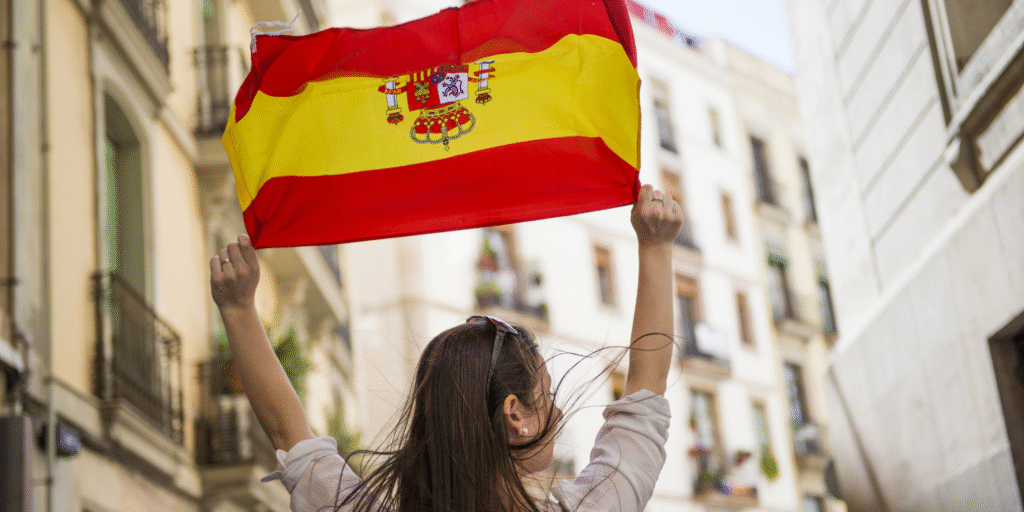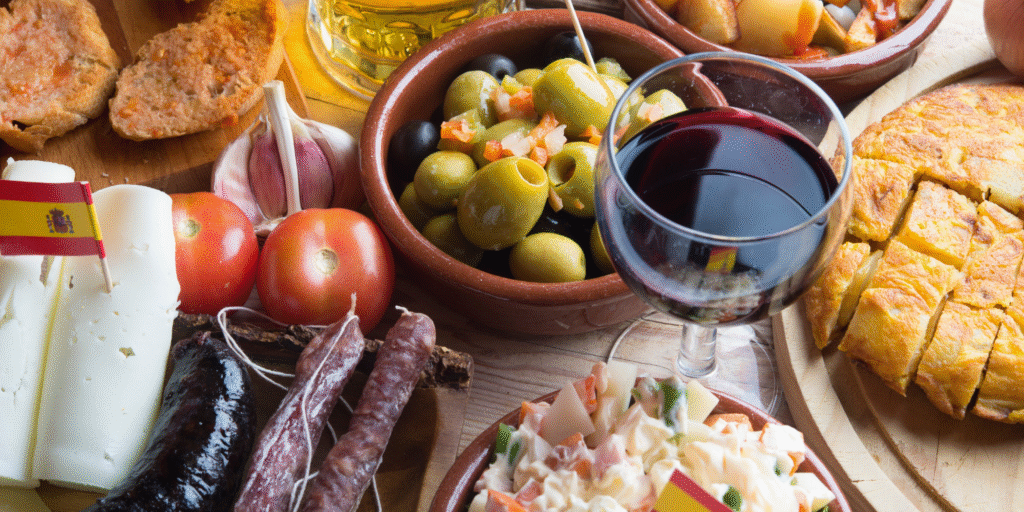Travel smarter and deeper—essential tips to explore Spain with confidence on your very first visit.
Why This Guide Matters
Traveling to Spain for the first time is a thrilling experience—vibrant plazas, incredible food, and a rhythm of life that feels refreshingly different. But Spain also has its own pace, customs, and quirks that can surprise new visitors.
Before you land in Madrid or Barcelona, here’s everything you should know to avoid tourist traps, blend in with locals, and make the most of your first Spanish adventure.

1. The Daily Schedule Is Not What You’re Used To
Spain runs on a later clock. Restaurants often don’t open until 8:00 PM, and many shops close for a mid-day siesta—especially in smaller towns.
Spain’s Meal Times (Approximate):
- Breakfast (Desayuno): 8:00–10:30 AM
- Lunch (Comida): 2:00–3:30 PM
- Dinner (Cena): 8:30–10:30 PM
Tip: Don’t expect 24/7 convenience. Embrace the slower pace—it’s part of the magic.
2. Carry Some Cash—It’s Still Common
While you can use a credit card in most cities, cash is preferred in local markets, small cafés, bakeries, and rural areas. ATMs are widely available but choose machines at real banks to avoid high fees.
Tip: Keep €1 and €2 coins handy for public restrooms or lockers at museums.
3. Understand Visa and Entry Rules
If you’re from the EU, US, Canada, Australia, or other visa-free countries, you can stay in Spain for up to 90 days within a 180-day period. But starting in 2025, travelers will need to apply for ETIAS (a digital travel authorization similar to the US ESTA).
🔗 Check ETIAS requirements here
4. Learn a Few Spanish Phrases
English is common in touristy cities, but locals appreciate effort—especially in smaller towns. Don’t worry about being perfect. A simple “hola” or “gracias” goes a long way.
Must-Know Phrases:
- Hola, ¿cómo estás? – Hello, how are you?
- ¿Dónde está el baño? – Where’s the bathroom?
- La cuenta, por favor. – The bill, please.
🔗 Learn: 10 Everyday Spanish Phrases for Travelers
5. Public Transport in Spain is Excellent
Spain has one of Europe’s best train systems. Renfe operates high-speed and regional trains that are clean, efficient, and affordable—especially if you book early.
Quick Tips:
- Use the AVE train between major cities (Madrid–Seville, Madrid–Barcelona).
- Book tickets online in advance at renfe.com.
- City metros (like Madrid or Barcelona) are clean and reliable.
- Intercity buses (e.g., Alsa, FlixBus) are great alternatives.
6. Buy a Local SIM or Portable Wi-Fi
Wi-Fi is available in most accommodations, but a local SIM card is helpful for Google Maps, translation, and transport apps.
Top providers: Vodafone, Orange, Movistar. You’ll find SIM kiosks at airports or convenience stores.
Tip: Bring an unlocked phone if you plan to use a Spanish SIM.
7. Tapas ≠ Small Meals. It’s a Lifestyle
Tapas are not just snacks—they’re a way of social dining. Spaniards often share 4–6 small plates, order in rounds, and linger for hours. In cities like Granada, you’ll often get free tapas with drinks.

Tipping?
- Not expected, but appreciated.
- Round up, or leave 5–10% for great service.
🔗 Read: How to Order Tapas in Spain Like a Local
8. Be Ready for Festivals (and Closures)
Spain hosts some of the biggest and most vibrant festivals in Europe, and they’re amazing—but expect transport delays, closed shops, and packed hotels if you’re visiting during:
- Semana Santa (April) – Easter processions
- San Fermín (July) – Running of the Bulls
- La Tomatina (August) – Tomato fight
- Las Fallas (March) – Firework-filled spectacle in Valencia
Tip: Book accommodations months in advance if you’re traveling to Spain for the first time during a major event.
9. Pack for Cobbled Streets and Cathedral Steps
Spain is incredibly walkable—but the old towns are filled with stone steps, hills, and cobblestones. Leave heels and flimsy sandals behind. Choose comfortable walking shoes or stylish sneakers.
10. What to Pack for Your First Trip to Spain
- ✅ Reusable water bottle – Tap water is safe
- ✅ Light layers – Evenings can get chilly
- ✅ Plug adapter – Spain uses Type C/E/F sockets (Europlug)
- ✅ Scarf or shawl – For churches or chilly nights
- ✅ Sunscreen – Especially in summer!
Bonus: Where Should First-Time Visitors Go?
If you’re traveling to Spain for the first time, here are classic cities to include:
| City | Why It’s Great |
|---|---|
| Madrid | Museums, parks, tapas, day trips to Toledo |
| Barcelona | Gaudí architecture, beaches, Gothic Quarter |
| Seville | Flamenco, festivals, orange-scented streets |
| Granada | The Alhambra, free tapas, Moorish charm |
| Valencia | Paella, beaches, Las Fallas festival |
Final Thoughts: Enjoy the Unexpected
Spain is filled with joyful chaos, long conversations, slow afternoons, and passionate traditions. Traveling to Spain for the first time is not just about seeing famous sites—it’s about feeling the rhythm of life in a country that lives fully.
Plan well, stay open-minded, and when in doubt?
Smile, speak a little Spanish, and enjoy the journey.
Have a Question or a Tip?
Have questions or something to add from your experience traveling to Spain for the first time? Drop your thoughts in the comments—I’d love to hear what helped you most or surprised you in Spain! 😊
